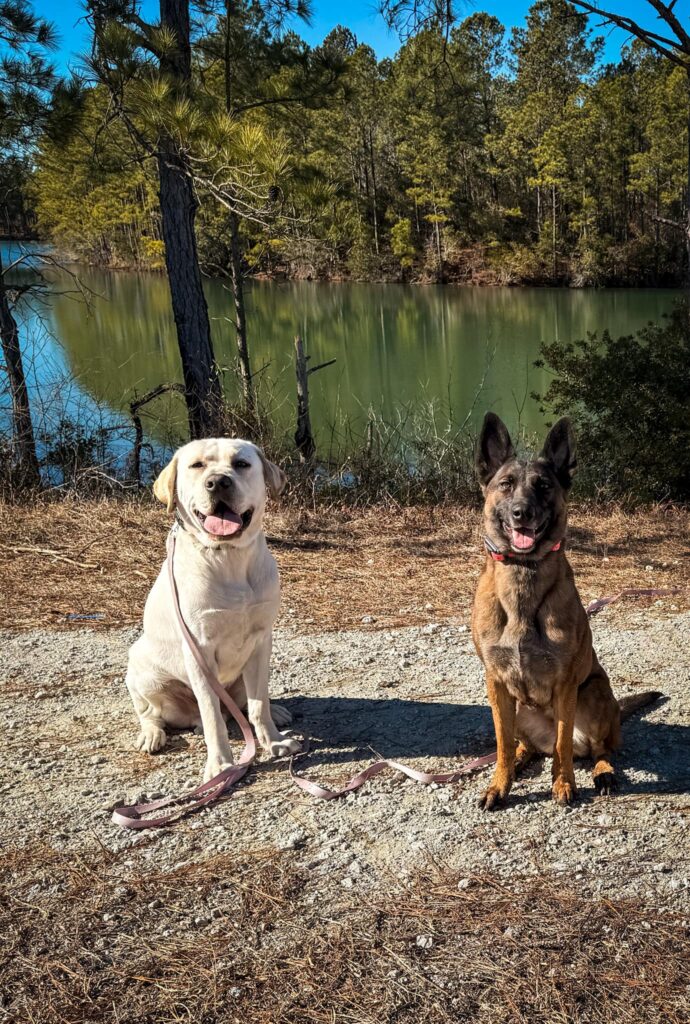Potty training, crate training, jumping, chewing, barking… all the things that can drive new puppy owners crazy! But fear not, because it is pretty easy to get those things under control if you take it seriously from day one. Puppies are little sponges and can take in SO much information, but it’s up to you to make sure they’re taking in all the right information.
Here are some recommendations to help you get started on the right paw with your new pup:
1. Puppy-proof your home: Remove any potential hazards or toxic substances from your puppy’s reach. Secure loose cords, block off areas that are off-limits, and ensure that there are no small objects that could be swallowed.
2. Set up a safe space: Create a designated area for your puppy with a comfortable bed, food and water bowls, and some toys. This will serve as their safe space where they can retreat to when they need some alone time…I always recommend the safe place should be a crate.
3. Introduce them gradually: Allow your puppy to explore their new surroundings at their own pace, while supervised. Start by introducing them to one room at a time, gradually expanding their access to the rest of the house over time as they earn freedom! Don’t give them too much freedom too quickly.
4. Establish a routine: Puppies thrive on routine, so establish a consistent schedule for feeding, potty breaks, playtime, and sleep. This will help them feel secure and understand what is expected of them, and will also set you up for success in potty training.
5. Socialize your puppy: Introduce your puppy to different people, animals, and environments to help them become well-adjusted and confident. Enroll them in puppy training early on and expose them to various sights, sounds, and experiences…Be conscious of your puppy’s health and don’t expose them to certain environments until fully vaccinated (dog parks, pet stores, etc.).
6. Limit freedom & give direction: Don’t grant your puppy access to the entire home with no supervision. Puppies should either be crated or tethered when they are not being supervised to minimize potty accidents and mischievous behavior. Keep a leash on your puppy in the home when they are exploring so you can give them gentle guidance as needed.
7. Start training early: Begin basic obedience training as soon as possible. Teach your puppy basic behaviors like to look at you, proper play, sit, stay, and come.
8. Provide proper nutrition: Feed them high-quality puppy food and ensure they have access to fresh water at all times.
9. Schedule a vet visit: Take your puppy to the veterinarian for a thorough check-up, vaccinations, and to discuss any specific health concerns or questions you may have.
10. Be patient and consistent: Remember that puppies are learning and adjusting to their new environment. Be patient with them as they may have accidents or exhibit unwanted behaviors. Consistency in training will help them understand what is expected of them.
11. Show love and affection: Spend quality time bonding with them through play, cuddles, and gentle grooming.
Remember, bringing a new puppy home requires time, effort, and patience. With proper care, training, and socialization, your new friend will grow into a happy and well-adjusted member of your family.
Jenny Klamm, owner of AvidDog Dog Training, has been professionally providing dog training in Wilmington, NC, and surrounding areas since 2017. Passionate about ethical and effective training, she specializes in rehabilitating dogs with aggression, anxiety, and reactivity. Jenny helps dog owners build trusting bonds with their pets through compassionate training. Book your free consultation today! https://aviddogtraining.com/contact-us/.




